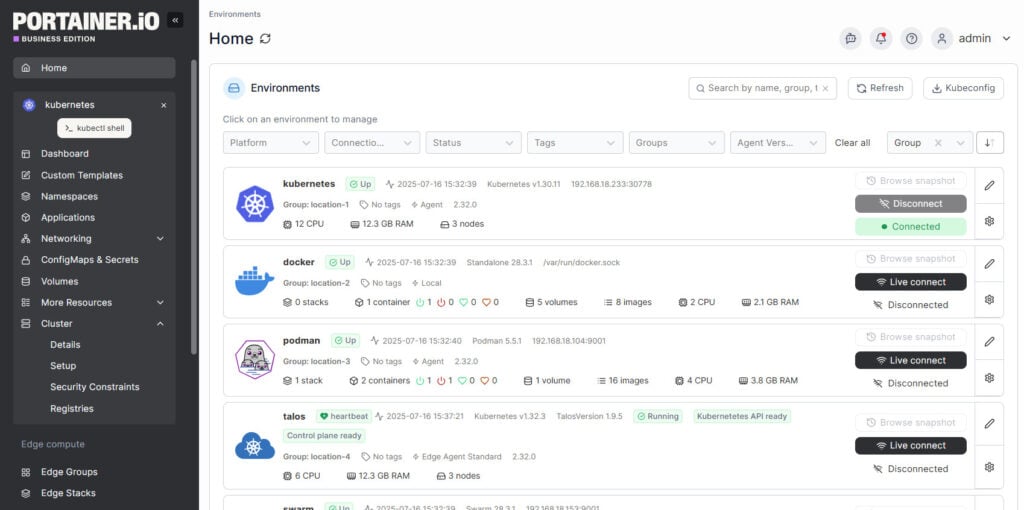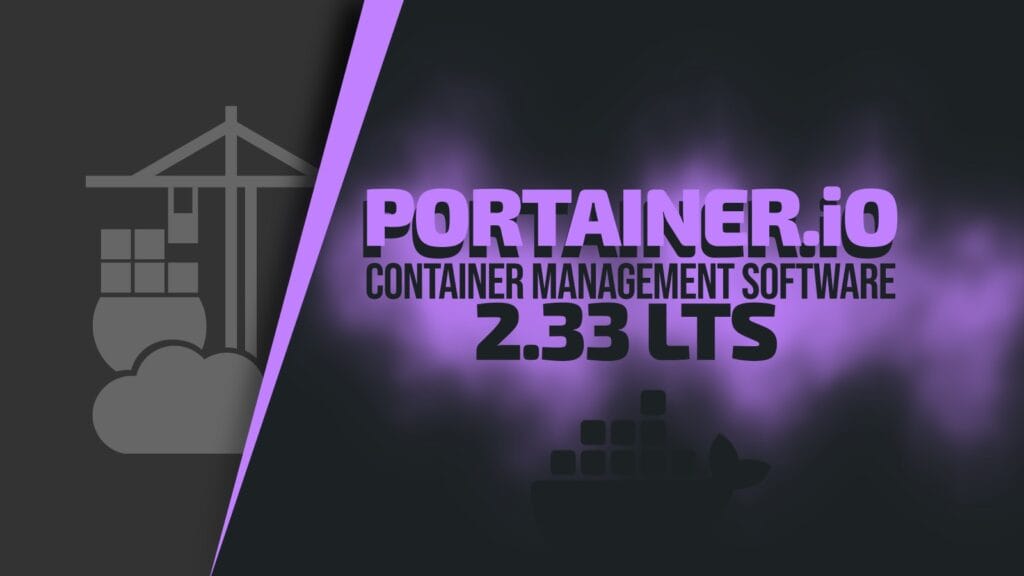Portainer, an open-source container management platform that provides a web-based GUI to simplify the deployment and management of containerized applications, has announced the release of version 2.33 LTS, a long-term support build. But the big news is not so much in the technical details. There is a refreshed brand identity in place.
According to the devs, the rebrand comes after nearly a decade of growth beyond Docker, where Portainer first made its name. However, with the company’s focus now centered on Kubernetes and edge deployments, CEO Neil Cresswell explained that the old branding no longer reflected what the platform had become.
Over the past few years, we’ve gone deep into Kubernetes and Edge. That’s where our users are, that’s where our product has matured, and that’s what we’re known for with the customers who have experienced the modern “us”. But the problem is, our brand didn’t reflect that. The logo still tied us to Docker. The vibe still suggested “basic GUI for beginners.” And too many people still assumed Portainer was what it used to be, not what it’s become.
So yeah, we rebranded. Not because we wanted to reinvent ourselves, but because we needed to correct the perception.
So, what does this mean? In short, Portainer appears to be gradually shifting its focus toward enterprise clients, trying to shake off its image as a “GUI for Docker” and emphasize its Kubernetes functionality, a move that opens the door for alternatives. One of the most notable is Komodo, which has been rapidly gaining traction as a reliable and feature-rich UI tool for container management.
On top of that, unlike Portainer, where certain features require a paid license, Komodo is fully open source. It also stands out with strong CI capabilities, which many consider to be ahead of what Portainer currently offers. Now, back to the topic.
On the technical side, Portainer 2.33 LTS integrates improvements from previous short-term releases. Among the most notable changes is a complete overhaul of Helm support. Users now get a dedicated details page for each Helm deployment, with revision history, upgrade and rollback controls, and configuration comparison between releases.

The new version also added support for selecting chart sources, repository-specific deployment, and OCI-format Helm charts. Behind the scenes, the platform now uses the Helm SDK directly rather than relying on the binary, cutting down on vulnerabilities and boosting performance.
Moreover, a new experimental feature, Observability, makes its way into the LTS stream. It allows notifications to be configured for environment conditions through channels such as Slack, email, or webhooks. Portainer cautions that it’s not ready for production use yet, but is looking for community feedback.
For Kubernetes clusters, administrators can now assign the newly introduced “Namespace Operator” role, which restricts operator-level permissions to designated namespaces instead of the entire cluster. Edge device management has also seen an overhaul of its update and rollback interface, providing more granular per-device reporting.
Security and usability have been refined with expanded mTLS certificate management directly from the UI, along with Kerberos support for Active Directory authentication. Docker Compose users benefit from new web editor features, including code completion and validation, which help catch errors before deployment.
Last but not least, regarding performance, more of the UI has been migrated to React, Docker snapshot retrieval has been streamlined, and load times across the application have been improved.
For more information, see the official announcement.
Being a Long‑Term Support release, Portainer 2.33 will receive maintenance until July 2026. After that, there’s a three-month migration window—so effectively, you can rely on updates and fixes through October 2026. The next LTS version, 2.39, is scheduled for release in February 2026 (with support lasting until January 2027).
Want to see what Portainer can do? Our updated guide makes it simple, walking you through the setup step by step.
Image credits: Portainer

Off-topic but this is the second time in about 10 days that I see the word Komodo.
In this case it’s a container manager.
The other case is the very new KomoDo To-Do manager by KDE’s Akseli Lahtinen.
And both times I was reminded of the old Komodo Python IDE (now OpenKomodoIDE but seemingly still abandoned) by ActiveSate.
Nah, Komodo’s a project in the same space as Portainer, and it’s fully open-source (https://komo.do). The big difference is that there aren’t any features stuck behind a paywall. But what’s even cooler is that it’s not just a UI for managing containers — it actually goes far beyond this. The Git integration is awesome and lets you set up full DevOps workflows. I’ve been using it for a bit, and I gotta say, I like it a lot.